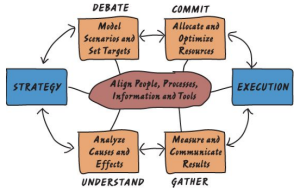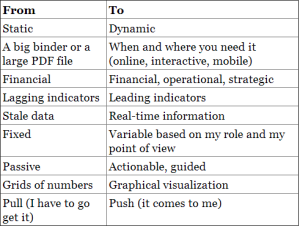8 Report Types for Better Information Delivery
September 11, 2014 Leave a comment
An important distinction to keep in mind while designing and building your management operating system is the classification of information and reports in the Gather process.
Classifying helps you assign the right process, tools, data, and resources to information, reports, and the Gather process. Without an overt classification, you can end up delivering information inefficiently, or worse, incorrectly.
Here are some common classifications:
- Financial. Usually relates to items found on the Profit and Loss statement, balance sheet, or cash flow. Content can be at a detailed or summary level.
- Operational. Usually contains information about volumes, units, headcount, inventory levels, and so on. Can also be at a detailed or summary level.
- Executive. Typically cross-functional information at a summary level.
- Sustainability. Information relating to environmental, health and safety, and community and social issues.
- Management or Internal. Includes flash reports. Typically contains information managers need to make business decisions before being transformed for external consumption.
- Statutory or External. Information that has been transformed according to GAAP or other regulatory standards.
- Canned. Standard reports that are used over and over again.
- Ad Hoc. Usually one-time information that’s situational and does not need to be retrieved later— although if found useful across different audiences and at different times can quickly find its way into a canned report.
You can learn more about EPM and how it can help your organization build a common business process to execute its strategy in my book Enterprise Performance Management Done Right: An Operating System for Your Organization (Wiley CIO)





